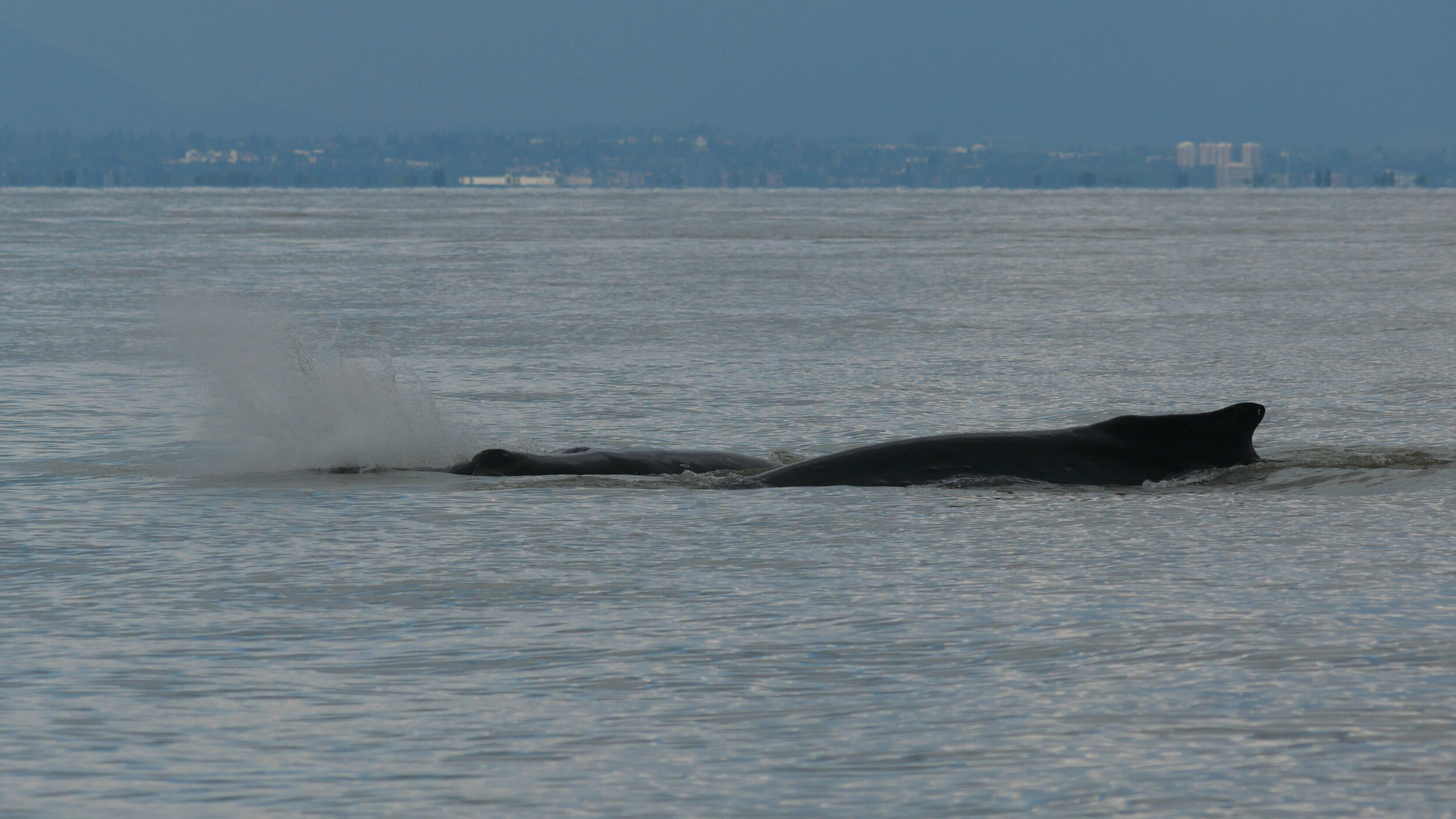July 24, 2020 - Raptor and her calf in the Strait!
It was fun times with raptor and her calf who were hanging out in the Strait of Georgia again today. The two whales seemed to be very excited and were displaying some really interesting (and fun to watch) behaviours! These included pec slaps, barrel rolls, tail slaps, and more!
Raptor is a humpback that we often see in the area in the summer but this year she came back with a calf! Humpback whales are migratory meaning that they travel south over the winter months for breeding and calving and then head north again to their feeding grounds over the summer. The whales which spend their summers in BC will migrate to either Hawaii or Mexico. “Cross-matching” occurs when a whale that is known in one area and gets spotted in another. Raptor hasn’t been cross-matched to a breeding ground yet but hopefully the information will arise in the future!
Raptor (right) and her calf (left) going for a dive!
Today Raptor and her calf were having a ball in the water showing off their immense strength and size with a bunch of surface activity! The activities are mostly self-explanatory in their names. Tail-slapping is when they lift their tail out of the water and slap it back down creating a loud noice and a big splash! Pec slaps is the same idea but with their pectoral fins (the ones at the front). Finally, barrel rolls are when the animal spins underwater and it is usually accompanied by some pec slaps as well. Barrel rolls and pec slaps are interesting to see since you usually end up getting a glimpse of the underside of the whale. This gives access to the part of the whale that isn’t usually seen. In the picture below you can clearly see the whales throat grooves. Baleen whales have these grooves to help them in the way that they eat. Instead of teeth these giants have baleen. Baleen is made of up tiny keratin bristles that form plates. The plates are used to filter out the food from the water that the whales are eating. Thats where the throat grooves we saw come in. Since the whales are such giant animals that eat tiny creatures they have to eat a whole lot of them. The grooves help accomplish this by increasing the volume of water that the whale can hold in its mouth. The mouth can hold almost 20,000 liters! That’s about 150 bathtubs worth of water!
Underside of the humpback! Those ridges are the throat grooves that let them get so much water in their mouth!
Seeing the humpbacks being playful in the water was a really amazing experience. Please enjoy the rest of the photos we got from the day taken by naturalist Rebeka!
Pec slaps galore!











